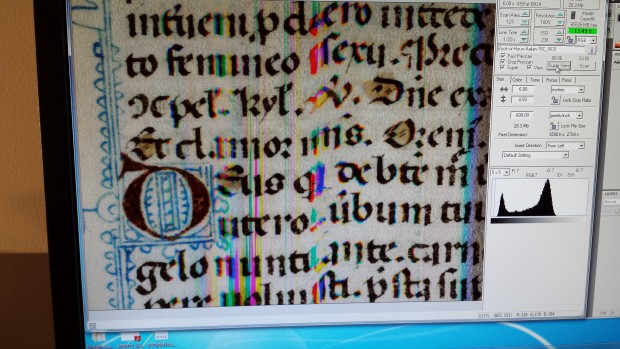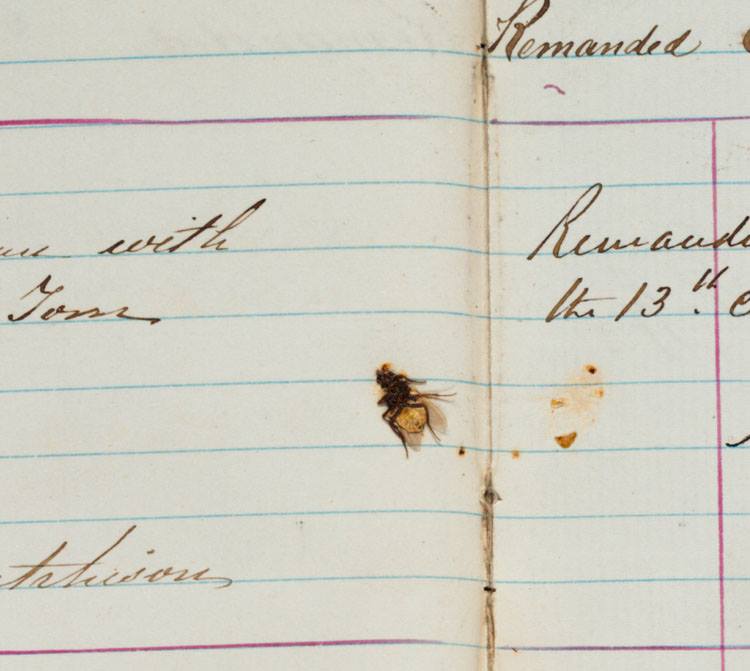When we are scanning, things generally go pretty smoothly but once in a while, they don’t. On a flatbed scanner, if an item moves during the scan, you can get a blurry picture or, more often, a distorted image that looks like something Salvador Dali painted.
When using the overhead scanner, if we obscure the light for even a second, you will see bands of colour across the image, like stripes. I think these can look very interesting, but they are not appropriate as part of the finished object and are usually discarded. Below is one example, captured while we scanned the Codex Pollick, Book of Hours, that also shows the BetterLight image capture software in action.

One set of scans was also digitally impaired by a speck of dust on the camera lens which led to a single pixel-wide line down the length of each image in either green, red, blue, or yellow, depending on the laser’s path. Those lines were removed using Photoshop after the scans were complete because we didn’t see them until the image was zoomed in past 100% size and the original documents had been returned.
When using the BookDrive DIY book scanner, there’s a pretty good chance we’ll get our hands in the way of the image. We’re not alone on that but we do delete the images and re-take. There’s an entire tumblr blog called The Art of Google Books that documents the strange things found when reading through Google Books (not unlike the things people see when scrolling around Google Street View). Some of the most popular submissions are images tagged “hands.” I’ve also had to re-do scans because a hair got into the image or I forgot to remove the focus-card — luckily these errors are infrequent, but can be frustrating, especially when time is of the essence!
Sometimes the imperfections are part of the object. Where possible, I will unfold pages if they are obscuring text, but not if the paper is so brittle that doing so would damage the book. Manuscripts or hand-colored pages sometimes show off the artist or scribe’s finger prints; damage from water, bookworms, or age (often called foxing) can be an important indicator of how the book was used or where it was stored; objects and ephemera stuck in between pages are also indicators of use, especially with items where we can trace the ownership and even show the handwriting. Every now and then, we even find flowers or bugs squashed flat between the pages.

In the example above, I can’t say for sure that the fly was the same age as the book or if it expired more recently but it was part of the physical object as received. Since I couldn’t guarantee that removing it would not damage the book, it remained in place during the scanning and when the book was returned to the Victoria Police Department, the fly went with it.
You can browse the logbooks in their entirety — ink splotches, houseflies and all — in our Victoria Police Department Charge Books collection.
